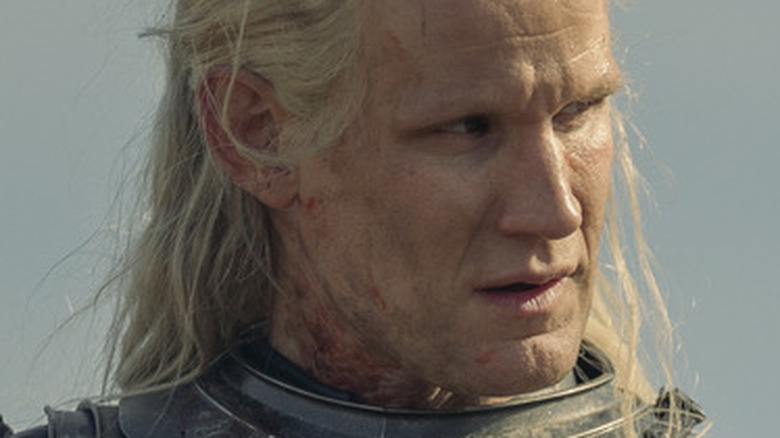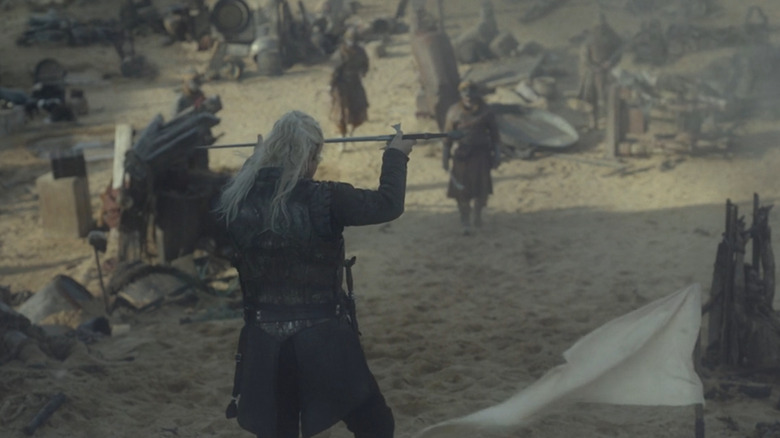This Was The Real Purpose Of House Of The Dragon's War Of The Stepstones
Events in "House of the Dragon" and the greater world of Westeros can be traumatic, deadly, and transformative. In just three episodes, fans have already seen decisions carry an unseen weight that will probably have far-reaching effects. Probably the biggest and most prolific is the decision of Viserys (Paddy Considine) to name his daughter Rhaenyra (Milly Alcock) heir to the Iron Throne. This marks the first time that a woman has ever been chosen as the next in line in terms of royal succession, and one that does not sit very well with many walks of life. The nobles do not appear to respect Viserys' decision and are quick to recognize his newborn son, and the common folk don't think a woman should ever be in charge.
Besides the above, viewers have also seen a dejected Lord Coryls (Steve Toussaint) make some hasty political moves after being rejected for his marriage proposal involving his own daughter and the king, as well as Daemon Targaryen (Matt Smith) stealing a dragon egg and absconding to Dragonstone. Of course, this is the world of "Game of Thrones" we are talking about, and there are actions and ramifications that will only become apparent as time goes on. One such event is the war in the Stepstones, which involves the combined forces of Daemon and Lord Coryls against a contingent of corsairs from the Free Cities. After some moves reminiscent of the second battle of Winterfell, Daemon emerged victorious, but it looks like the series showrunners have a very specific reason for his reckless run.
The War of the Stepstones is meant to transform Daemon
In a featurette played at the end of Episode 3 and proudly posted on Twitter, the series showrunners break down several aspects and their methodology behind such storytelling decisions. First and foremost, both Ryan Condal and Miguel Sapochnik said that this particular episode is about the end of childhood, and predominately focused on Daemon and Rhaenyra coming to terms with their respective lots in life. This is highlighted by Rhaenyra defending herself from the boar attack and the appearance of the white hart, but Daemon's spotlight is literally marked by fire and blood during his one-man assault on the Triarchy's forces.
The two showrunners said that the whole scene is meant to appear to be a suicide run, with Matt Smith adding that they wanted to show Daemon losing but at the same time coming out on top. Condal then stated of the battle sequence, "It was really meant to be an anvil where Daemon's character could be forged. And he could go into the battle, and come out as a formidable force that had proven himself worthy of some reputation in Westeros." Director Greg Yaitanes also said of the moment, "There's no way that story would not have ended with his death, if not for the arrival of the cavalry. And that's the thing I like about it, is that he came there to die, and he really meets death in the face and is reborn."
Considering these words, it appears as if the true meaning of the battle of the Stepstones was to act as a crucible to further Daemon's character, and to put special focus on his combat prowess and state of mind. This recklessness will probably become even more obvious in future episodes.

